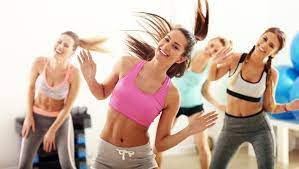Dancers are athletes who require physical stamina, flexibility, and strength to perform at their best. Being in good shape helps dancers execute movements with precision, avoid injuries, and maintain peak performance throughout their career. In this article, we will explore the best ways to achieve and maintain fitness as a dancer.
Table of Contents
- Introduction
- Benefits of fitness for dancers
- Cardiovascular fitness
- Strength training
- Flexibility and mobility
- Nutrition and hydration
- Rest and recovery
- Injury prevention
- Cross-training
- Mental health
- Conclusion
- FAQs
Introduction
Dance is a highly demanding physical activity that requires a combination of strength, flexibility, and endurance. To perform at their best, dancers must have a strong and healthy body that can handle the demands of their art form. In this article, we will discuss the various aspects of fitness that are essential for dancers and how they can achieve optimal health and performance.
Benefits of fitness for dancers
Regular exercise and fitness routines offer numerous benefits to dancers. Fitness training can improve cardiovascular health, build muscular strength, increase flexibility and mobility, and prevent injuries. Additionally, it can help dancers develop self-discipline, reduce stress, and improve mental well-being.
Cardiovascular fitness
Cardiovascular fitness is essential for dancers, as it improves endurance and stamina. It involves activities that increase heart rate and breathing rate, such as running, cycling, or swimming. Cardiovascular exercise should be performed at least three to four times per week for 30-45 minutes.
Strength training
Strength training is crucial for dancers, as it helps them execute movements with power and control. Dancers should focus on building strength in their legs, core, and upper body. Resistance training using bodyweight, dumbbells, or resistance bands can be incorporated into dance training or done separately.
Flexibility and mobility
Flexibility and mobility are critical for dancers to perform with ease and grace. Stretching exercises should be done regularly to increase range of motion and prevent injuries. Dancers should perform static stretches after their workouts, as well as dynamic stretches before dance classes.
Nutrition and hydration
Nutrition and hydration are essential for maintaining optimal health and performance. Dancers should eat a well-balanced diet that includes lean protein, complex carbohydrates, healthy fats, and plenty of fruits and vegetables. Hydration is also crucial, and dancers should drink water before, during, and after workouts.
Rest and recovery
Rest and recovery are essential components of any fitness routine. Dancers should ensure they get enough sleep, as well as take rest days to allow their bodies to recover. Massage, foam rolling, and stretching can also help alleviate muscle soreness and promote recovery.
Injury prevention
Injuries can be devastating for dancers, as they can derail their careers. To prevent injuries, dancers should warm up properly before classes or performances, wear appropriate footwear, and listen to their bodies when they feel pain or discomfort. Additionally, cross-training and regular rest days can help prevent overuse injuries.
Cross-training
Cross-training involves incorporating different forms of exercise into dance training. It can help improve overall fitness and prevent injuries. Dancers can try activities like Pilates, yoga, or swimming to supplement their dance training.
Mental health
Mental health is a crucial aspect of overall well-being, and dancers should prioritize it as much as physical fitness. Stress and anxiety can affect performance and lead to burnout. Dancers should find ways to manage stress, such as through meditation, therapy, or hobbies outside of dance.
Conclusion
Dancers require a combination of strength, flexibility, and endurance to perform at their best.









0 Comments